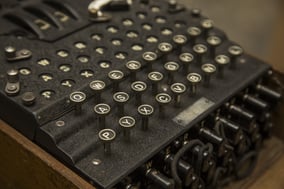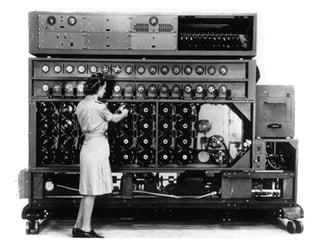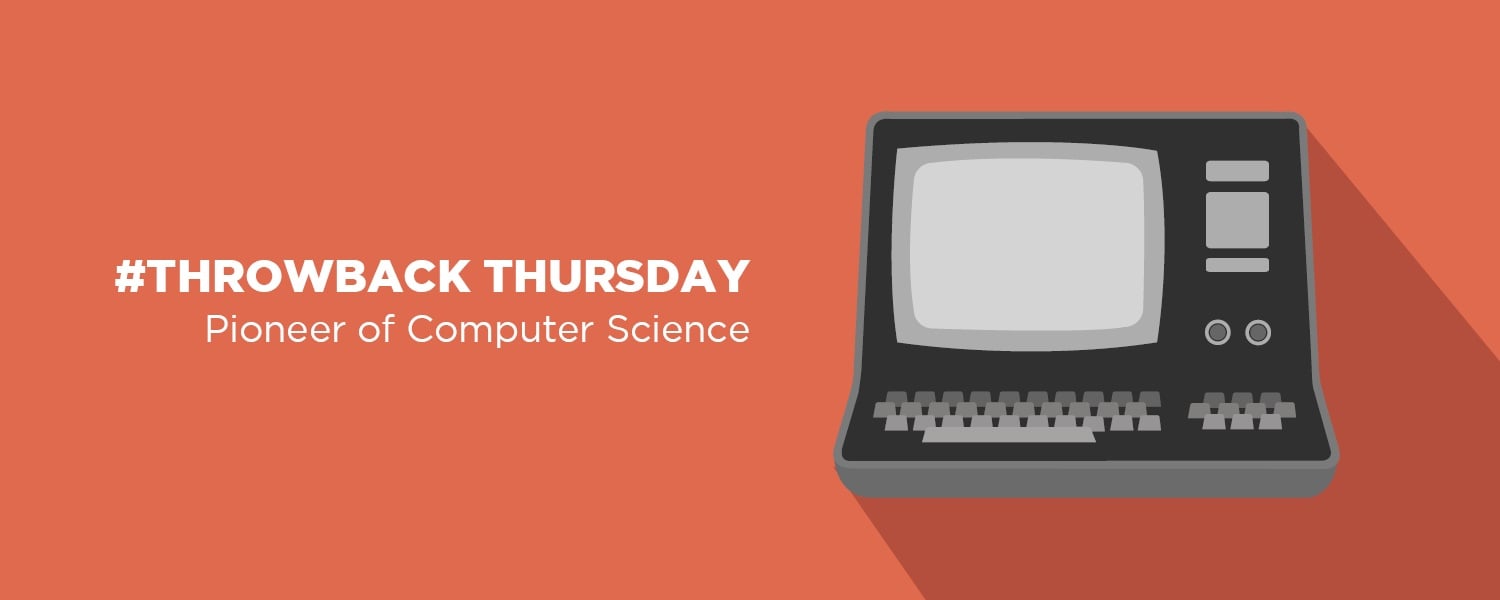In 1950, mathematician Alan Turing shared his belief that computers would one day be so powerful that they would be able to think and also that artificial intelligence would become a reality. He created the Universal Turing Machine in 1936 that could be programmed to do anything, thus starting a new era of business computing. Turing also had a huge impact during World War II, but this wasn’t widely known until the 1970s as his work for the military was considered top-secret.
 Enigma Machine
Enigma Machine
The first Enigma machine, an electro-mechanical machine designed to encrypt messages, was invented in 1918 because radio communications were not secure in the 1900s. However, the German Navy wouldn’t utilize it until 1926 with the Army following in 1928, modifying it throughout World War II to improve its efficiency.
How it worked:An Engima machine looked like a typewriter and consisted of a keyboard with a set of lights for each letter of the alphabet, 3-5 rotors and a plug board. You typed the letters into the machine to create a message, writing down the corresponding letters that lit up as you typed.
- Machine scrambled the letters with the plug board
- Rotors encrypted the message by moving for each character
Since the encryption settings changed daily to increase security, deciphering it meant having access to the German’s document with the changing codes. The odds of cracking the Enigma code were 158,962,555,217,826,360,000 to 1.
“Greatest Allied War Contribution”
As a code-breaker, Alan Turing was employed fulltime at Bletchley Park in Buckinghamshire, where he worked to decipher the German military's enigma codes. At the time, he had broken the code used by the army but had been unable to break the Navy enigma. During World War II, the German Navy was sinking British ships carrying weapons, equipment and food. When Turing broke the Enigma code in 1941 with a technique he called Banburismus, it became the single biggest contribution to Allied victory according to Winston Churchill, as without food or weapons, Britain would have lost the war.

The Bombe
Another key invention that contributed to the victory against Nazi Germany was known as The Bombe, an electromechanical machine invented by Turing and Gordon Welchman. The machine would check thousands of possibilities, eliminating the improbable. Next, in addition to the people working as code-breakers, a checking machine was used on those possibilities until the correct code was found, which could then be used to break every intercepted message that day. This contribution is said to have shortened the war by two years and saved millions of lives.
The impact:- 211 operating Bombe machines
- Cracked 3,000 messages per day
- 5 million messages cracked by the end of the war
To this day, the annual ‘Turing Award’ is the highest accolade in the computer science industry since 1966. In 2016 Sir Tim Berners-Lee was awarded the Turing Award for “inventing the World Wide Web, the first web browser and the fundamental protocols and algorithms allowing the Web to scale.”
-1.png?width=1092&height=792&name=logo%20(1092x792)-1.png)
%20copy(black%20letters).png?width=1092&height=792&name=logo%20(1092x792)%20copy(black%20letters).png)

 Enigma Machine
Enigma Machine


.png?width=100&height=91&name=white%20logo%20(100x91).png)